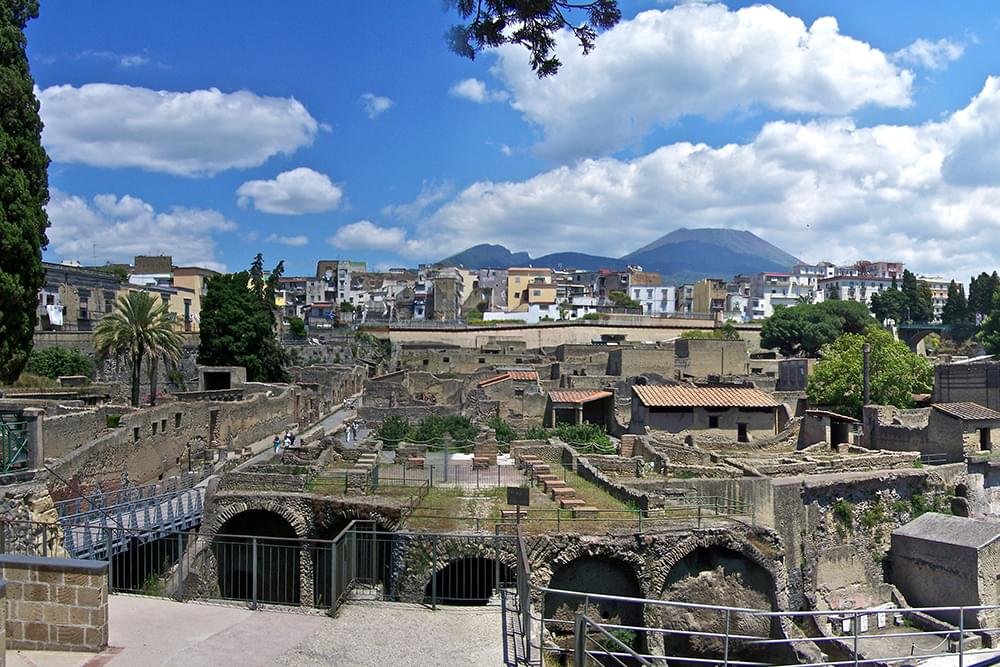
The province of Napoli, located in the Campania region of southern Italy, is one of the most iconic and dynamic areas in the country. It is a place where history, myth, art, and everyday life come together in a thrilling mosaic.
Beyond the city of Naples itself lies a province filled with archaeological wonders, volcanic landscapes, stunning coastline, and some of Italy’s most famous foods and traditions.

Napoli province is shaped by the forces of nature. Dominating the skyline is Mount Vesuvius, one of the most famous volcanoes in the world, which continues to loom over the Bay of Naples with quiet intensity.
The province also includes the Phlegraean Fields, a vast volcanic area full of craters, thermal springs, and strange geologic phenomena, creating a dramatic setting for history and legend to unfold.
Few places in the world offer such a vivid glimpse into ancient life as the archaeological sites of Pompeii and Herculaneum. These Roman cities were buried under ash and preserved for centuries by the eruption of Vesuvius in 79 AD.
Visitors today can walk the streets, visit houses, and see frescoes and mosaics that bring the Roman world to life with astonishing clarity, making the province a magnet for history lovers and scholars alike.
While the Amalfi Coast is internationally famous, part of it lies within Napoli province, and so does the equally stunning Sorrentine Peninsula. These coastal areas offer cliffside villages, lemon groves, and dramatic sea views.
Sorrento, Vico Equense, and Massa Lubrense are all part of the provincial landscape, offering warm hospitality, picturesque settings, and access to boat tours, scenic drives, and relaxing beaches.
Napoli province also includes the celebrated islands of Capri, Ischia, and Procida, each with a distinct personality. Capri is famed for its glamour, cliffs, and the Blue Grotto, while Ischia is beloved for thermal spas and green hills.
Procida, recently named Italian Capital of Culture, charms with its colorful harbor, quiet beaches, and timeless authenticity. Together, these islands complete the province’s enchanting coastal dimension.
Napoli province pulses with life and tradition. Whether it's the explosion of color during a patron saint festival or the daily ritual of coffee at the bar, culture is experienced through everyday moments.
Music, especially Neapolitan song, dance, and street performance are integral to local identity. Celebrations like the Festa di Piedigrotta and historical reenactments offer immersive experiences for visitors.
The food of Napoli province is globally recognized and locally revered. Pizza, born in Naples, is just the beginning. The province’s cuisine is full of intense flavors and traditional recipes passed through generations.
Seafood pasta, fried street snacks like cuoppo, buffalo mozzarella, pastries like sfogliatella and babà, all reflect the richness of the land and sea, as well as the passion of the people who cook and eat together.
Inland from the coast, the province hides quiet towns and historic villages that are less visited but just as fascinating. Places like Nola, Acerra, and Ottaviano offer archaeological sites, churches, and bustling local life.
These towns reveal another face of Napoli province, less dramatic, perhaps, but deeply rooted in Campanian traditions, from farming to artisanal crafts to family-centered communities that welcome visitors warmly.
The province is known for its artisan crafts, including ceramics, presepi (Nativity scenes), coral jewelry, and inlaid wood. These are often made in family-run workshops with generations of knowledge.
Art spills into the streets here, graffiti, murals, music, and sculpture all blend with historic architecture and ancient ruins to create a setting where the old and the new exist in constant, vibrant dialogue.
Napoli province is well-connected by public transport, including trains, ferries, buses, and highways. From Naples, you can reach Pompeii, the islands, and the coasts within an hour.
Spring and autumn are ideal for travel, with mild weather and fewer crowds. Summer is lively and perfect for beach trips and festivals, while winter offers festive markets and cultural events.
Napoli province is a land of powerful contrasts, ancient and modern, fiery and serene, monumental and intimate. It invites exploration not just of places, but of passions and traditions.
For those looking to experience Italy at its most energetic, expressive, and unforgettable, the province of Napoli is more than a destination, it’s a living story, always unfolding.

More Details



